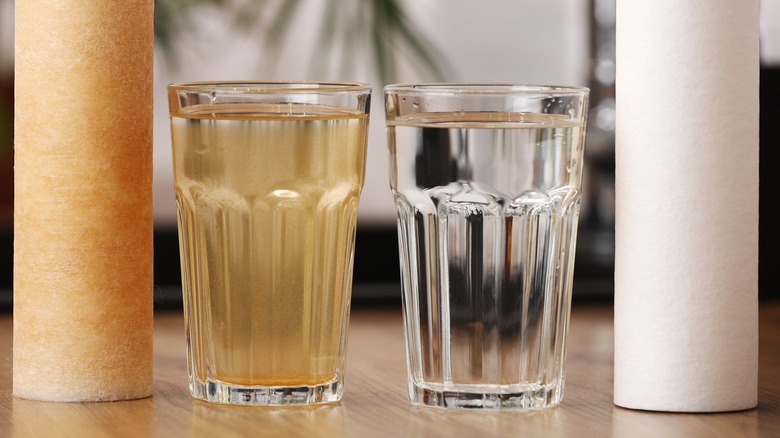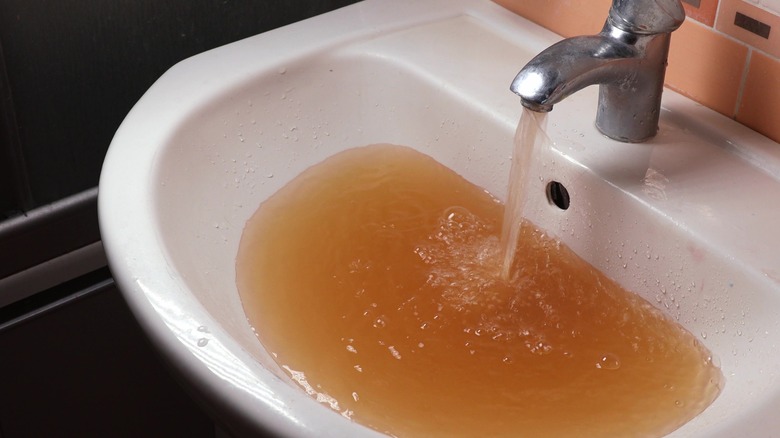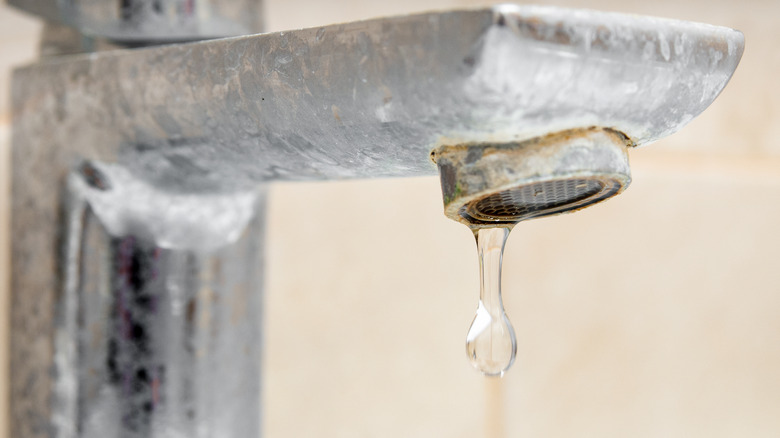What It Means If The Water Running From Your Faucet Is Cloudy
When you observe cloudy water flowing from your faucet, you'll need to investigate what's happening. While this may be startling, in some cases, cloudy water is generally not a health concern — it just depends on the cause. Most times, it can indicate issues with your plumbing system or the water supply itself. Some common reasons include trapped air in the pipes, sediments in the water, or the presence of hard water.
Air can become trapped in your plumbing due to various reasons, such as repairs or sudden changes in water pressure. This air, when mixed with water, forms tiny bubbles that give the water a milky or cloudy appearance. Additionally, cloudy water is the most common in colder weather. Cold water is more likely to appear cloudy due to its higher capacity to hold undissolved air compared to hot water.
To determine if trapped air is the cause, you can perform a simple test. Pour water into a transparent glass and watch it closely. Should the murky appearance slowly dissipate, beginning at the bottom and progressing upwards, it's a likely indicator of air bubbles in the water. If trapped air in pipes is a recurring issue, it might suggest other problems like leaks or improper plumbing configurations. In such cases, it's best to call a professional to ensure the maintenance and proper installation of your plumbing system. Once you're certain trapped air isn't the problem, it's time to look out for other issues like sediments.
Sediments in the water
Moving to the first major cause, sediments and contaminants in water can lead to cloudiness. In some scenarios, these contaminants might pose health risks. For example, methane gas can escape from landfills. If you suspect this is the case, it's best to contact your local government to run a check. Other sediments often comprise materials such as rust from aging pipes or other minute particles. These not only affect the appearance, but can also alter the taste and quality of your water. The presence of sediments can be a sign of corroding pipes, especially in older homes, or issues with the local water supply.
Beyond rust, common sediment types include sand and clay, which are frequently found in drinking water systems. Addressing this issue effectively requires a proactive approach. One such solution is the installation of a water filtration system, which is an efficient method to reduce the levels of these particles, ensuring your water is both cleaner and clearer. However, installing a filter is just the first step. To maintain its efficiency, regular maintenance and, occasionally, replacement of the filter is crucial. If you're using well water, you may face a unique set of challenges. The Centers for Disease Control and Prevention (CDC) recommends regular testing (at minimum once every spring) and treatment of well water to prevent and manage sediment accumulation.
Hard water and cloudiness
Lastly, let's delve into the issue of hard water, a key player in cloudy water. Predominantly found in areas with limestone and chalk, hard water is characterized by high levels of minerals, particularly calcium and magnesium. While these minerals aren't a health hazard, they often create practical challenges around your home. The presence of these minerals in hard water becomes notably apparent when the water is heated. The heat causes these minerals to precipitate, forming tiny particles that contribute to the cloudiness of the water.
Beyond the aesthetic issue of cloudiness, hard water is notorious for causing limescale buildup in pipes and appliances. This buildup can significantly reduce the efficiency and lifespan of these systems, leading to potentially costly repairs and replacements. But it's not all bad news, since we also need these minerals to survive.
To effectively combat the issues associated with hard water, consider using a water softener system. Water softeners are highly effective in clearing the cloudiness and preventing the accumulation of scale within your plumbing. This system works by removing the calcium and magnesium ions from the water and replacing them with sodium or potassium ions.


